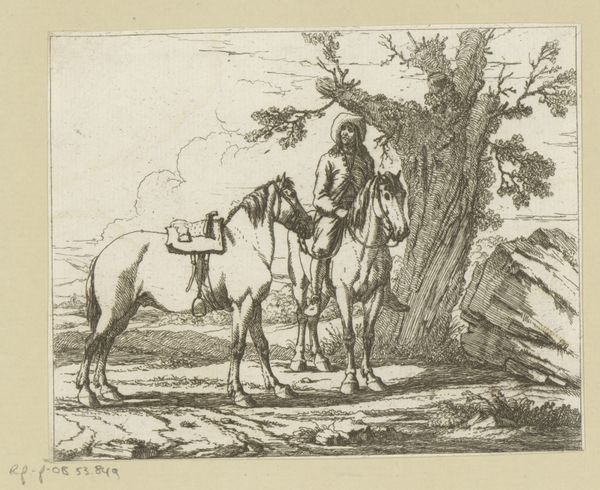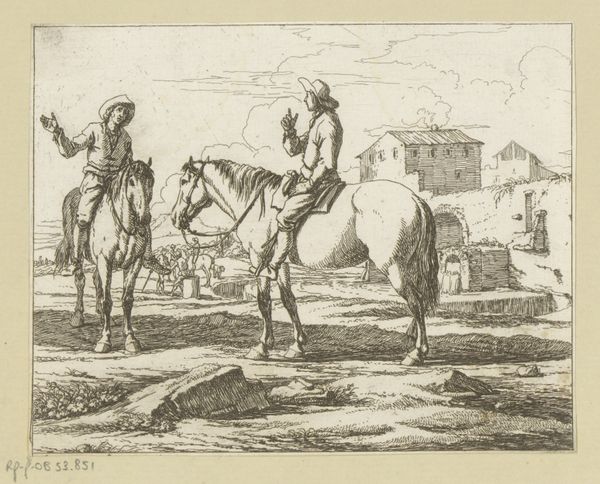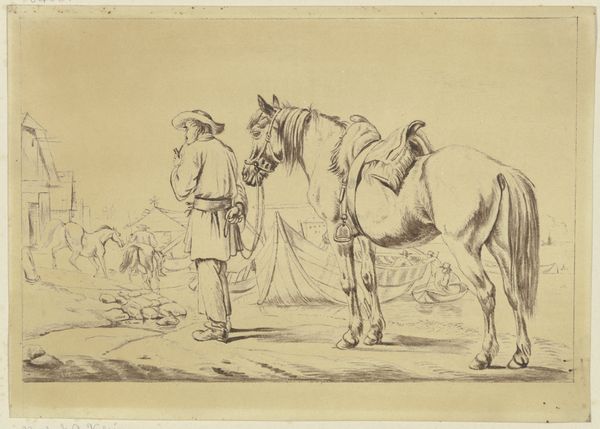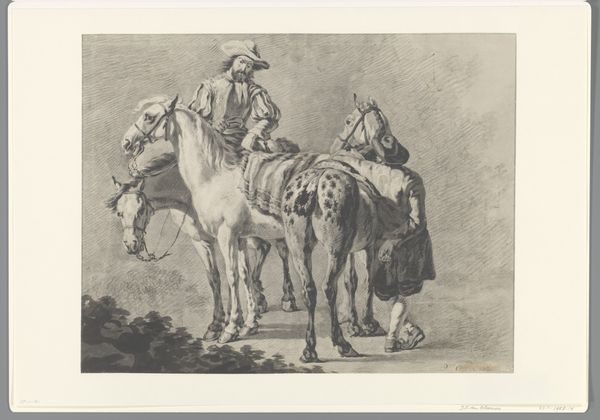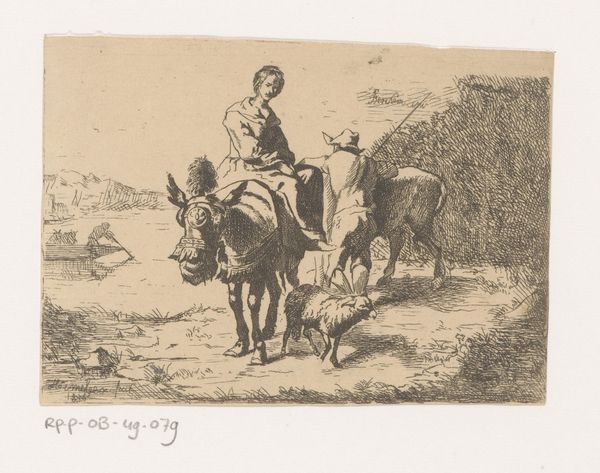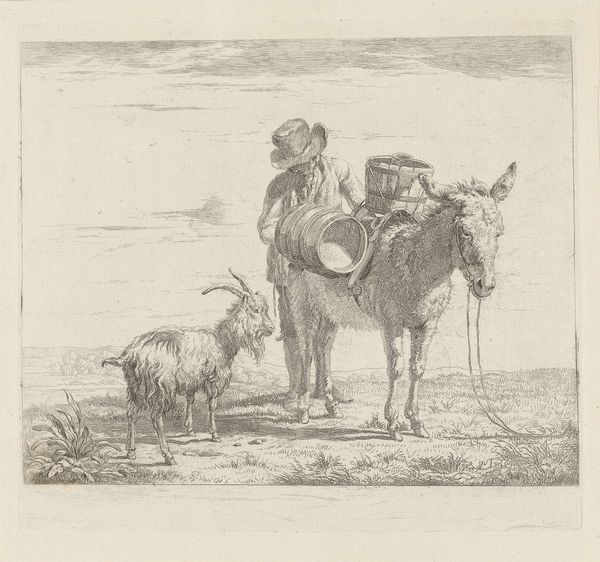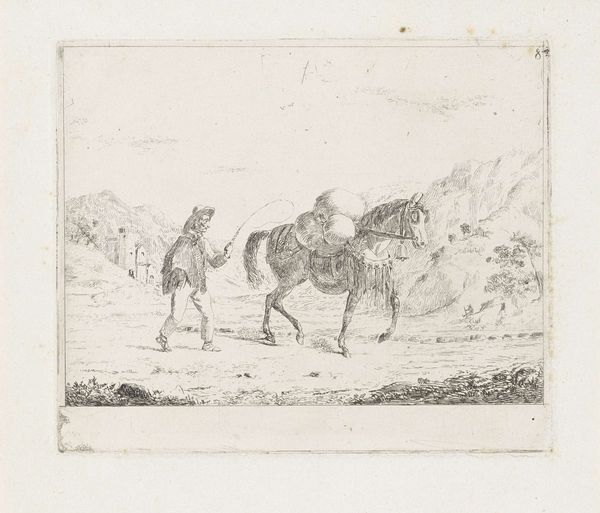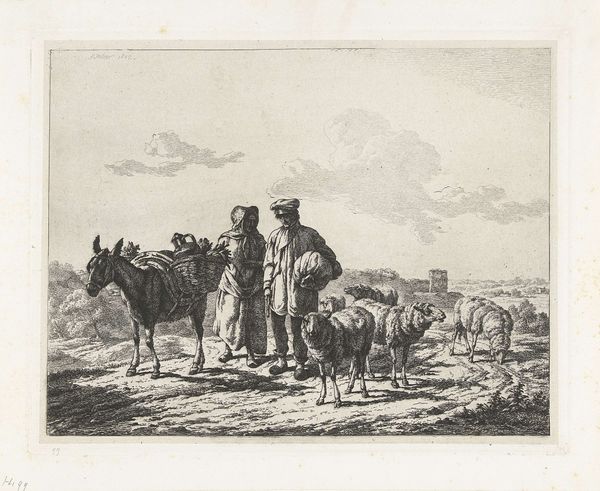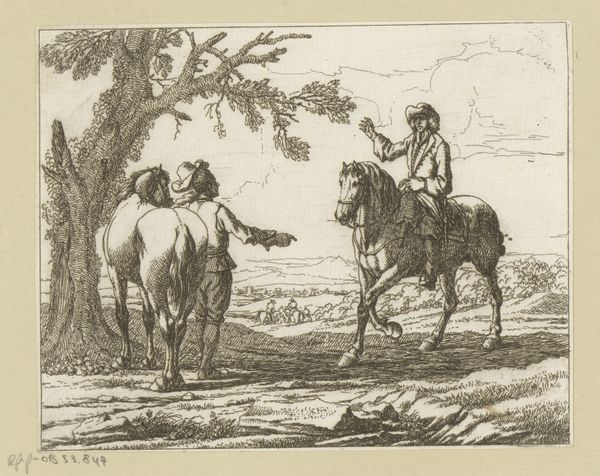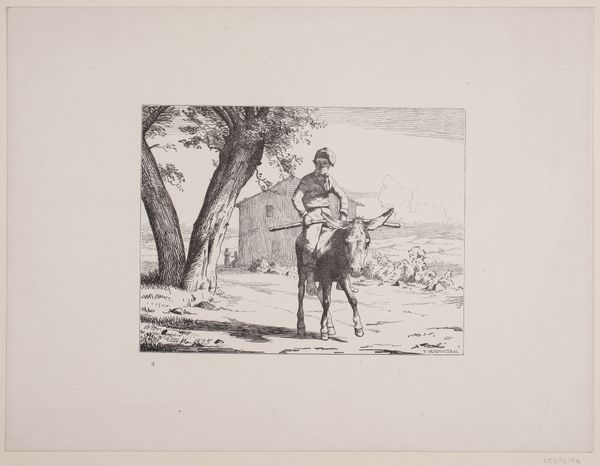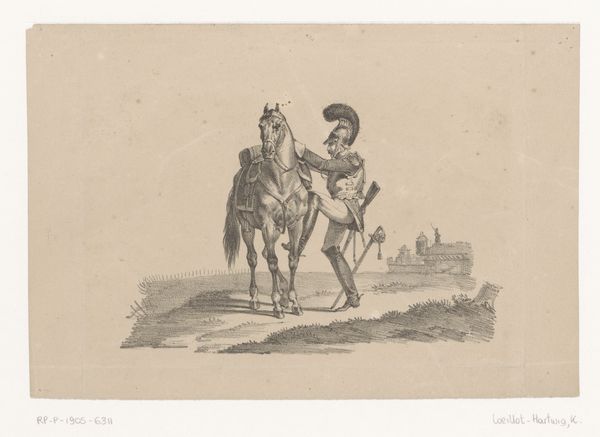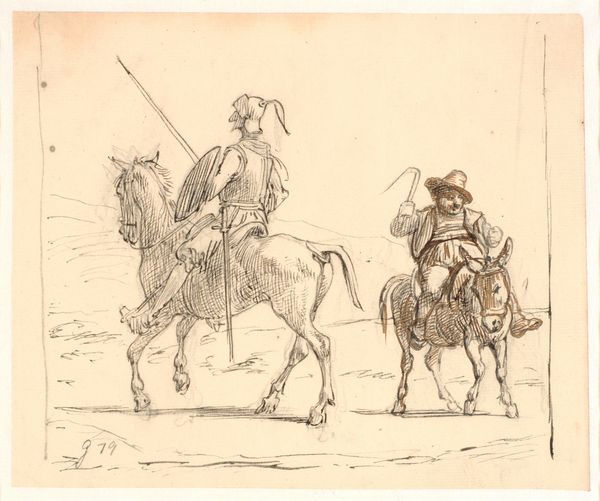
print, engraving
#
baroque
# print
#
landscape
#
figuration
#
line
#
genre-painting
#
engraving
Dimensions: height 89 mm, width 107 mm
Copyright: Rijks Museum: Open Domain
Curator: This engraving, titled "Reizigers bij de Piramide van Cestius," or "Travelers at the Pyramid of Cestius" in English, was created around 1698 by Georg Philipp Rugendas. It depicts a scene near Rome's ancient pyramid. Editor: My first impression is of lightness—the delicate, almost frantic linework, combined with the bright background, suggests movement and energy. There's a real sense of baroque dynamism here. Curator: Precisely. Rugendas, though German, captured a particularly Italian experience: the Grand Tour. Notice how the pyramid becomes less about ancient solemnity and more about serving as a backdrop to everyday life and travel. The travelers are the real subject here. Editor: And what an interesting trio they make. The seated figure on horseback gestures expansively, and he draws our eye with his elegantly draped cloak, yet it's the other two figures that intrigue me. There is an earthiness to their forms with more angular linework on display, quite unlike the round forms we see on the horse rider. The donkey too— weighed down with burdens, facing us head on—becomes almost a symbol of endurance. Curator: Certainly, these details provide clues to how people viewed travel and antiquity at the time. The act of viewing ancient monuments like this pyramid, as a spectacle of culture. The Grand Tour was after all as much about status as about education and enlightenment. Editor: It's interesting to consider, that while appearing realistic, Rugendas also uses linear perspective to subtly manipulate our focus. The slightly raised horizon line causes our vision to rise more steeply. We can sense that pyramid more viscerally; the foreground offering only a small slither of terrain Curator: Yes, and consider also that Rugendas himself never travelled to Rome. He had almost definitely relied on sketches made by other artists and printmakers and combined them for these appealing images of Rome that proved popular at the time. It offered the experience without the expense or the difficulty of the trip itself. Editor: It does offer so much food for thought about visual composition—and the artistic and social value in this simple composition. Curator: Indeed. And to ponder the relationship between reality, representation, and aspiration. A souvenir for the armchair traveller, perhaps?
Comments
No comments
Be the first to comment and join the conversation on the ultimate creative platform.
